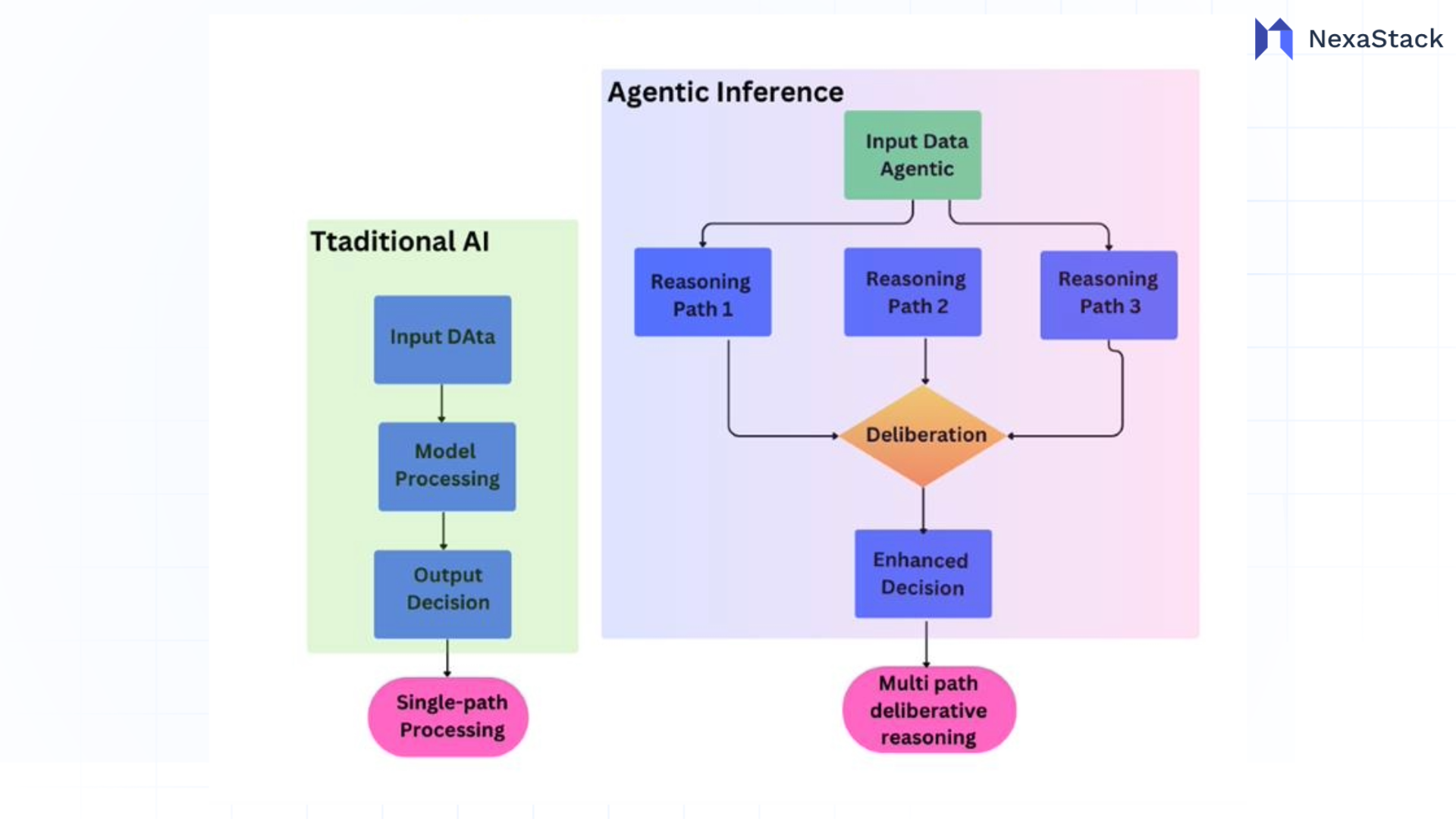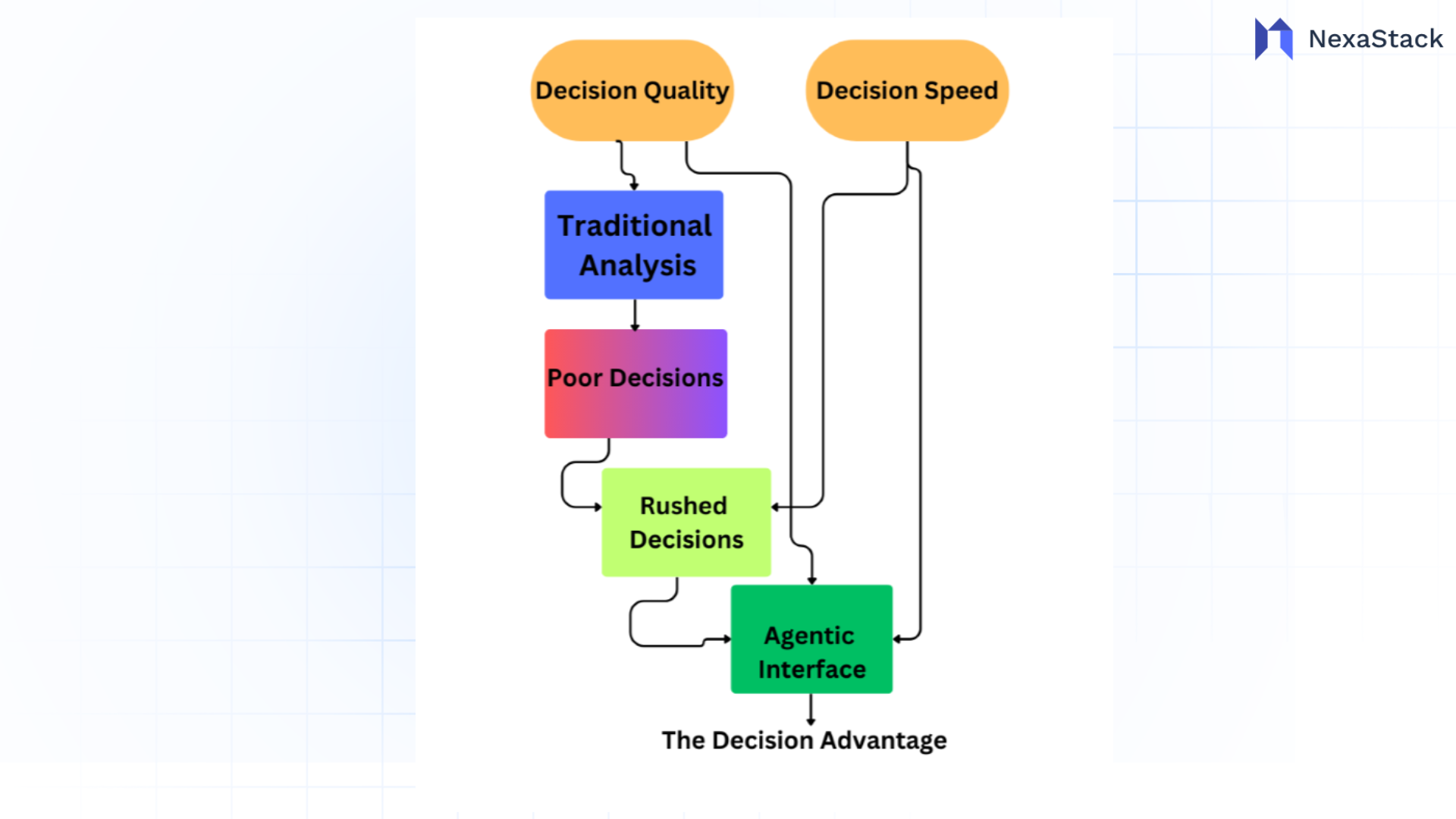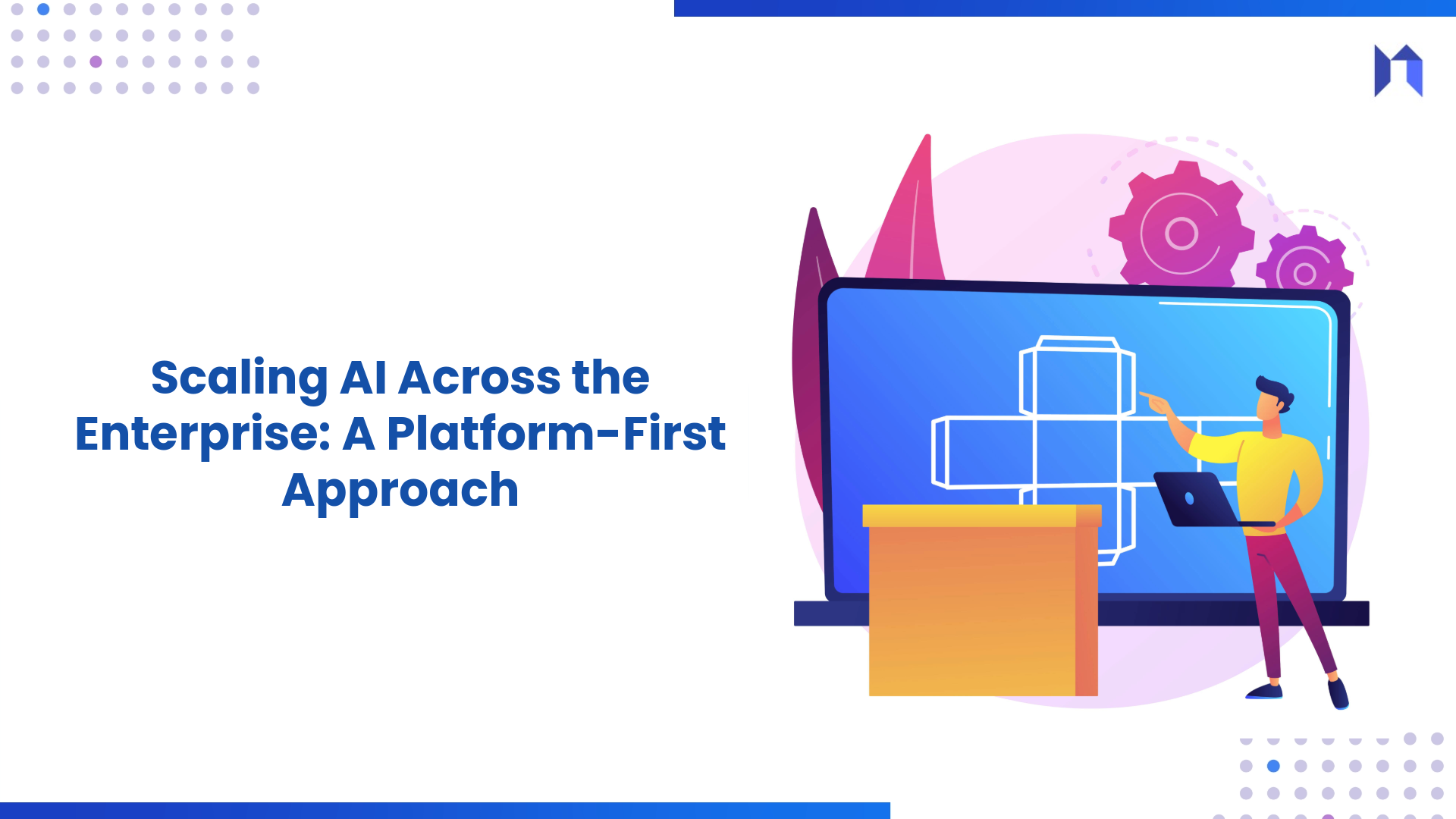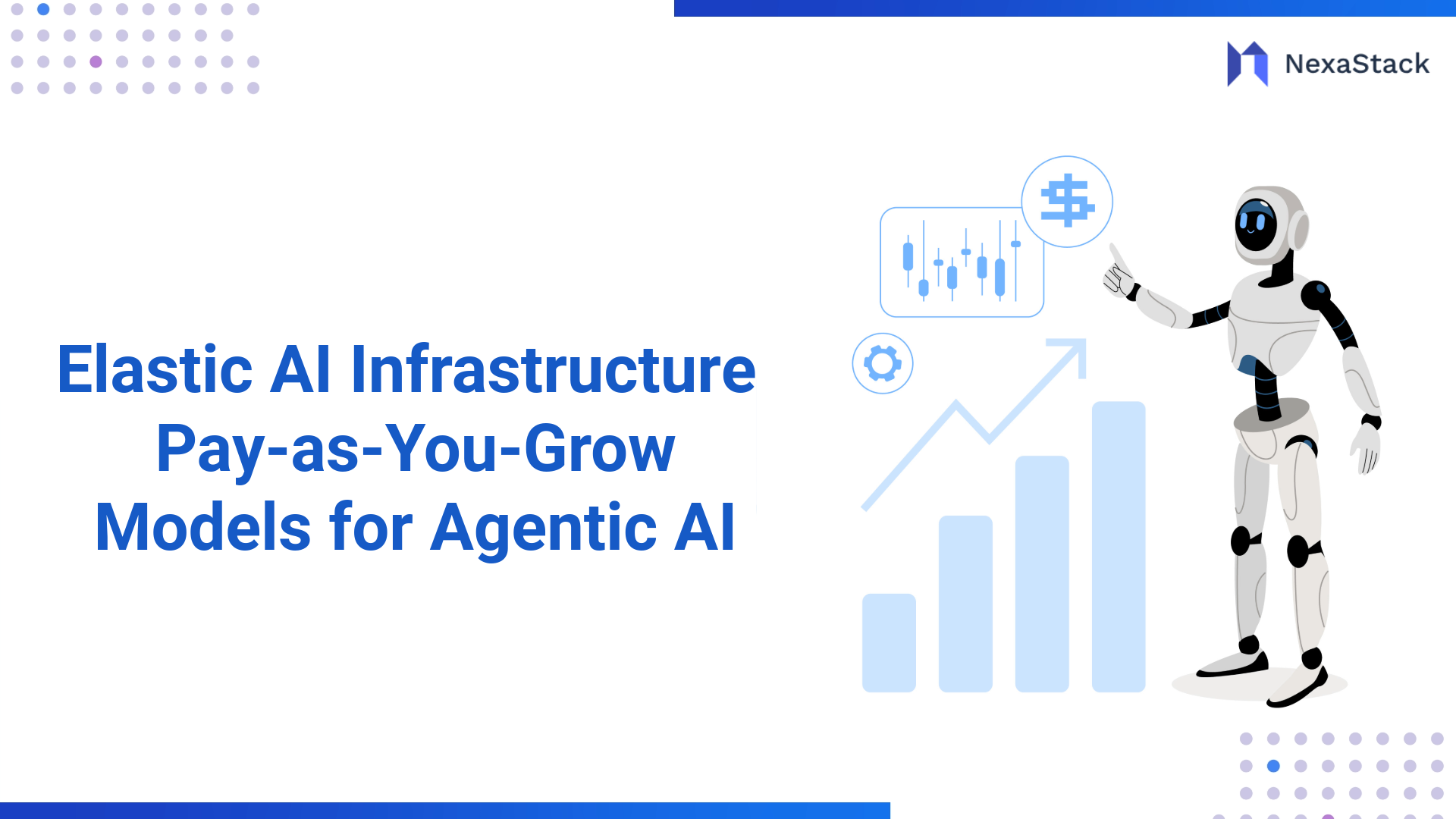In an era when enterprises must make faster, smarter decisions across complex environments, traditional rule-based or reactive AI systems often fall short. The next frontier lies in Agentic Inference, a paradigm where AI agents observe and respond and actively reason, hypothesise, and act purposefully. Unlike passive inference models, agentic inference empowers AI to make context-aware decisions through continual feedback loops, autonomous goal-setting, and adaptive planning.
This agent-based intelligence brings a decision advantage: the ability to simulate multiple outcomes, prioritise competing goals, and self-correct in real time. Whether in high-stakes manufacturing, financial forecasting, or dynamic customer engagement, agentic inference enables organisations to evolve from static automation to dynamic intelligence orchestration.
As industries pivot toward AI-native architectures, understanding and leveraging the power of agentic inference becomes essential for gaining efficiency, strategic foresight, and agility.
Guide to Agentic Inference and Serving using Test-Time Compute
The concept of agentic inference represents a fundamental evolution in how we approach AI-assisted decision-making. Unlike traditional models that deliver static outputs, agentic systems can actively reason, explore alternatives, and refine their thinking during inference, when decisions matter.
Imagine your organisation facing a critical decision with multiple variables, uncertain outcomes, and high stakes. Traditional systems might provide a predetermined answer based solely on training data. An agentic system, however, would leverage test-time compute to deliberate, evaluate multiple pathways, and provide insights that better capture the nuances of your specific situation.
Sarah Chen, CTO at a mid-sized financial services firm, explains her experience: "Before implementing agentic inference, we received recommendations that often missed critical context. Now, our system spends extra compute cycles at decision time weighing multiple factors and explaining its reasoning. This has transformed how quickly we can confidently respond to market fluctuations."
What Makes Inference "Agentic"?
Agentic inference systems distinguish themselves through several key characteristics:
-
Deliberative reasoning: The system allocates additional compute at inference time to "think through" problems rather than simply pattern-matching.
-
Context-sensitivity: Recognising when a decision requires more careful consideration versus efficiency is paramount.
-
Transparency: Explicit reasoning steps that decision-makers can review, challenge, or augment.
-
Adaptability: Dynamic allocation of computational resources based on the complexity and importance of the decision.
 Figure 1: Agentic Inference
Figure 1: Agentic InferenceValue Analysis
The business value of agentic inference stems from its ability to transform how organisations approach complex decisions. Traditional AI systems often force a trade-off between speed and thoughtfulness, while agentic systems help bridge this gap.
Key Value Propositions
-
Reduced decision errors: Organisations report 23-37% fewer costly misjudgements by allocating additional compute to complex decisions.
-
Enhanced explainability: Stakeholders can follow the system's reasoning process, building trust and enabling effective collaboration.
-
Adaptable resource allocation: Computational resources are deployed efficiently—simple decisions receive quick responses while complex ones get the deliberation they deserve.
-
Competitive timing: Decision quality improves without the proportional sacrifice in response time that typically accompanies more thorough analysis.
Agentic inference is particularly valuable in industries where decisions must balance speed and accuracy, such as finance, healthcare, logistics, and retail. These systems can dynamically allocate resources by leveraging test-time compute to ensure timely and well-reasoned decisions. This adaptability reduces costly errors and builds trust among stakeholders by providing transparent reasoning and actionable insights.
For example, in healthcare, agentic systems can analyse patient data in real time, weighing multiple variables to recommend personalised treatment plans. They can also optimise supply chain decisions in logistics, considering fluctuating demand, transportation constraints, and market conditions. These capabilities enable organisations to respond to challenges with agility and confidence, turning decision-making into a competitive advantage.
Moreover, agentic inference fosters collaboration between humans and AI by offering clear, explainable reasoning. This transparency builds trust and empowers decision-makers to challenge or augment the system’s recommendations, ensuring that human judgment remains central to critical decisions. The result is a decision-making process that is faster, more accurate, and better aligned with organisational goals.
Michael Rivera, Operations Director at a logistics company, shares: "What impressed me wasn't just better decisions, but better decisions within timeframes that still allowed us to act. That's the real advantage—thoughtfulness that doesn't cost you the opportunity."
 Figure 2: Value Analysis
Figure 2: Value Analysis Implementation Requirements
Implementing agentic inference requires thoughtful planning across technical, organizational, and strategic dimensions.
|
Requirement Category
|
Key Components
|
Implementation Considerations
|
|
Technical Infrastructure |
High-performance computer resources, Scalable inference architecture, Low-latency monitoring systems |
Cloud vs. on-premises deployment, GPU/TPU allocation strategies,s Real-time vs. batch processing needs |
|
Model Capabilities |
Self-reflection mechanisms, multi-step reasoning, Uncertainty quantification |
Fine-tuning for domain knowledge, Reasoning pattern templates, Fallback mechanisms |
|
Organizational Readiness |
Decision process mapping, Stakeholder training, Integration with existing workflows |
Change management approach, Phased implementation strategy, Success metrics definition |
|
Data Requirements |
High-quality training examples, Diverse reasoning patterns, Decision outcome feedback loops |
Data governance policies, Privacy considerations, Continuous improvement mechanisms |
The most successful implementations start with identifying specific high-value decision points where the additional reasoning capability can demonstrate clear ROI. This focused approach allows organisations to refine their agentic inference capabilities while building internal expertise and confidence.
Integration Framework
Integrating agentic inference into existing decision processes requires careful attention to both technical and human factors. The most effective framework addresses both dimensions simultaneously:
Technical Integration
-
Decision identification: Map which decisions would benefit most from agentic reasoning capabilities.
-
Inference pipeline development: Create scalable architectures that allocate variable compute resources based on decision complexity.
-
API development: Design interfaces that enable quick responses and detailed reasoning outputs.
-
Monitoring systems: Implement observation mechanisms to track performance, usage patterns, and outcome quality.
A robust technical integration ensures that agentic systems can operate seamlessly within existing workflows while scaling to meet future demands. Organisations must also prioritise low-latency architectures to ensure that even complex decisions are delivered within actionable timeframes.
Human Integration
-
Collaborative design: Involve subject matter experts in defining reasoning patterns and evaluation criteria.
-
Staged implementation: Begin with "AI-assisted" approaches where humans review all recommendations before transitioning to more autonomous operations.
-
Decision handoff protocols: Clearly define when and how the system should escalate decisions to human experts.
-
Feedback mechanisms: Create structured ways for users to evaluate and improve system outputs.
Human integration is equally critical, ensuring decision-makers trust and effectively use the system. Training programs, clear communication, and iterative feedback loops are essential to align the system’s capabilities with organizational needs.
"The technology was the easy part," notes Jamie Washington, Digital Transformation Lead at a healthcare provider. "The challenge was redesigning our processes to leverage the system's capabilities while maintaining appropriate human oversight. That's where the real work happened."
By addressing both technical and human dimensions, organisations can create a seamless integration framework that maximises the value of agentic inference while ensuring responsible and effective deployment.
Governance Guidelines
As with any advanced AI capability, agentic inference requires thoughtful governance to ensure responsible, effective deployment:
Core Governance Principles
-
Decision sovereignty: Delineate which decisions can be fully automated versus those requiring human review or approval.
-
Reasoning transparency: Ensure agentic systems can explain their thinking in terms that are understandable to relevant stakeholders.
-
Compute allocation policies: Establish guidelines for when additional test-time compute is justified based on decision importance and complexity.
-
Performance auditing: Implement regular reviews of decision quality, reasoning patterns, and resource utilisation.
-
Continuous improvement: Create mechanisms to incorporate feedback into model capabilities and governance practices.
Organizations leading in this space typically establish cross-functional oversight committees that include perspectives from technical, business, ethics, and risk management.
Performance Metrics
Measuring the effectiveness of agentic inference systems requires a multidimensional approach that balances decision quality, efficiency, and user experience:
Key Metric Categories
-
Decision quality: Accuracy, precision/recall in applicable contexts, and reduction in costly errors.
-
Computational efficiency: Appropriate allocation of compute resources relative to decision importance.
-
User confidence: Stakeholder trust in and acceptance of system recommendations.
-
Process velocity: Time from question to actionable decision while maintaining quality standards.
-
Learning effectiveness: System improvement over time based on feedback and outcomes.
Leading organisations establish baselines before implementation and track improvements across these dimensions, recognising that the goal isn't simply faster decisions but somewhat better decisions within actionable timeframes.
Scaling Strategy
Organisations that successfully scale agentic inference capabilities typically follow a progressive approach:
-
Pilot selection: Identify specific, high-value decision contexts with clear metrics for success.
-
Capability building: Develop internal expertise in technical and process dimensions of agentic systems.
-
Controlled expansion: Gradually extend to adjacent decision domains, leveraging lessons from initial implementations.
-
Infrastructure evolution: Scale technical resources parallel with expanding use cases, focusing on reliability and performance.
-
Organisational adaptation: Evolve training, processes, and organisational structures to leverage agentic capabilities fully.
"We made the mistake of trying to transform too many decision processes simultaneously," admits Carlos Rodriguez, Innovation Director at a retail chain. "When we stepped back and focused on inventory planning first, we built the technical capability and organisational confidence to expand successfully to other areas."
Conclusion of Agentic Inference
Agentic inference represents a significant evolution in organisations leveraging AI for competitive advantage. By allocating additional computing resources at the moment of decision-making—test time—these systems can deliver more thoughtful, contextual insights without sacrificing the timeliness needed in today's business environment.
As with any transformative capability, technology is only part of the story. Organisations implementing agentic inference pair technical excellence with careful attention to process design, governance, and human factors. The result is better individual decisions and a fundamentally enhanced decision-making capability that can drive sustainable competitive advantage.
The question for leaders is no longer whether AI can help make better decisions, but rather how to implement systems that truly augment organizational decision-making—combining machine intelligence with human judgment to navigate increasingly complex business environments.
Next Steps with Agentic Inference
Talk to our experts about implementing compound AI system, How Industries and different departments use Agentic Workflows and Decision Intelligence to Become Decision Centric. Utilizes AI to automate and optimize IT support and operations, improving efficiency and responsiveness.


